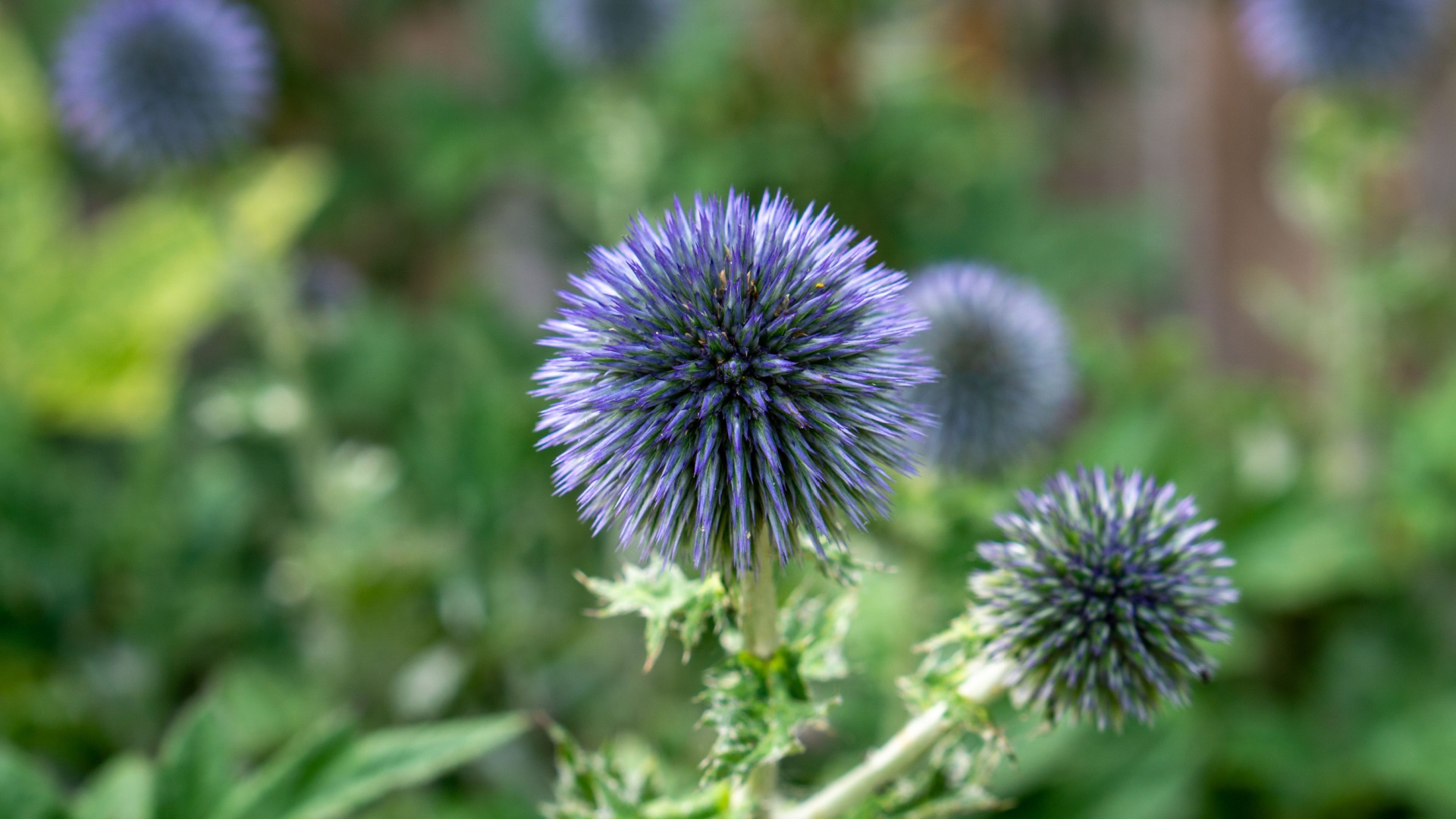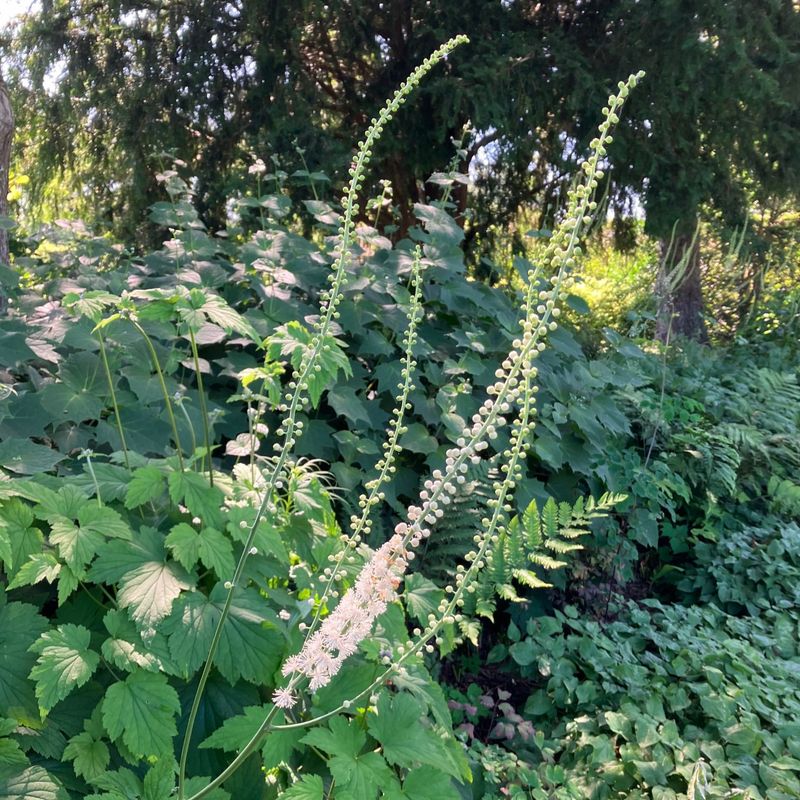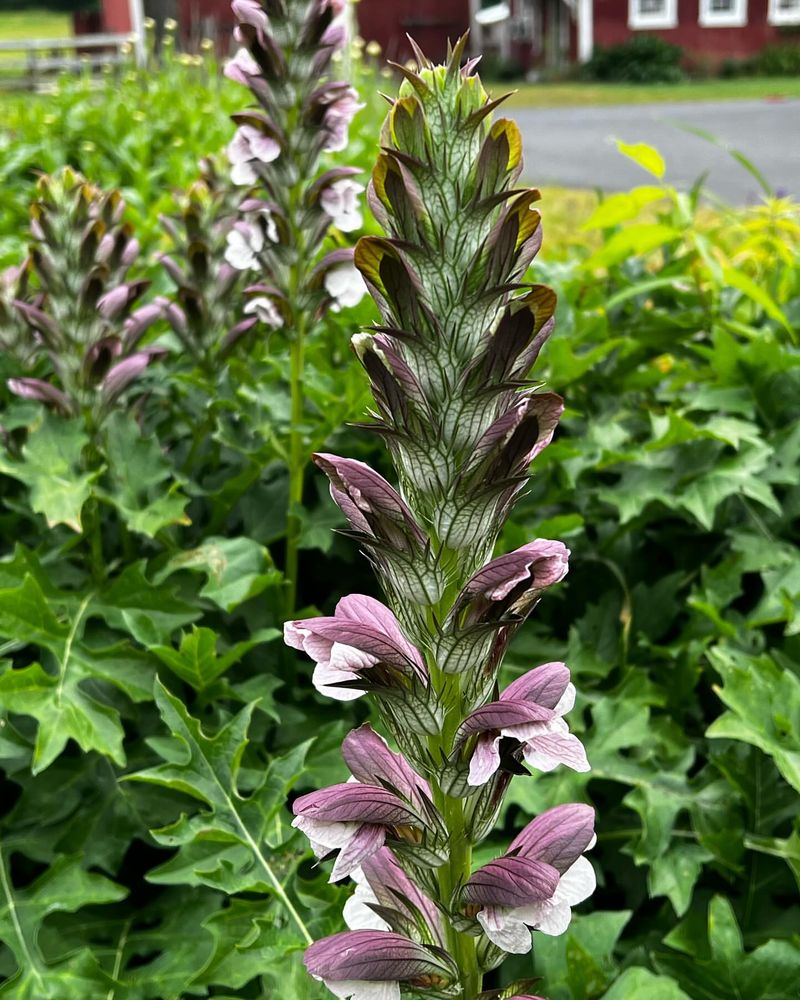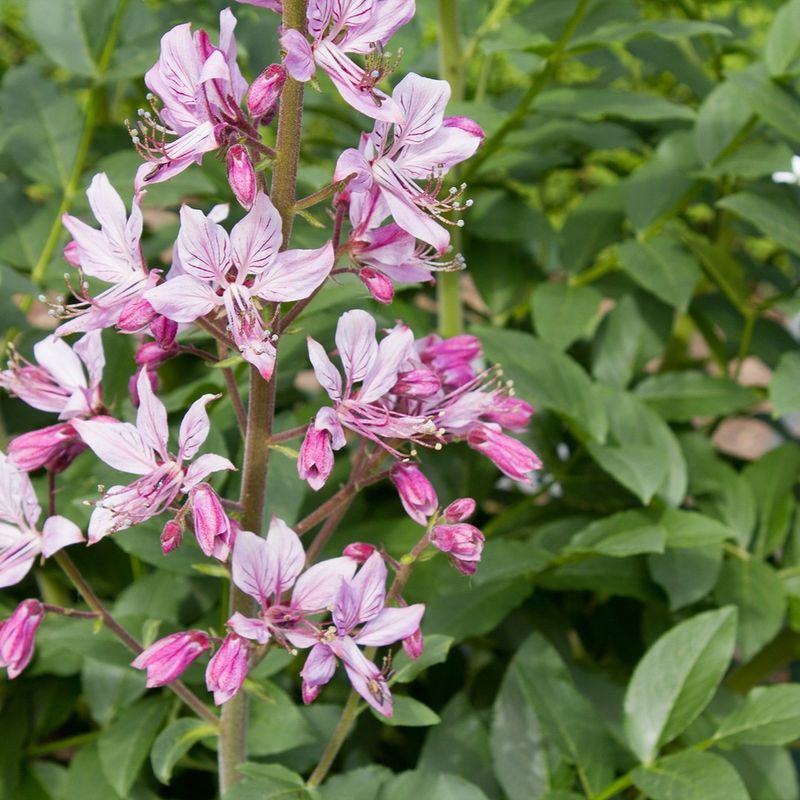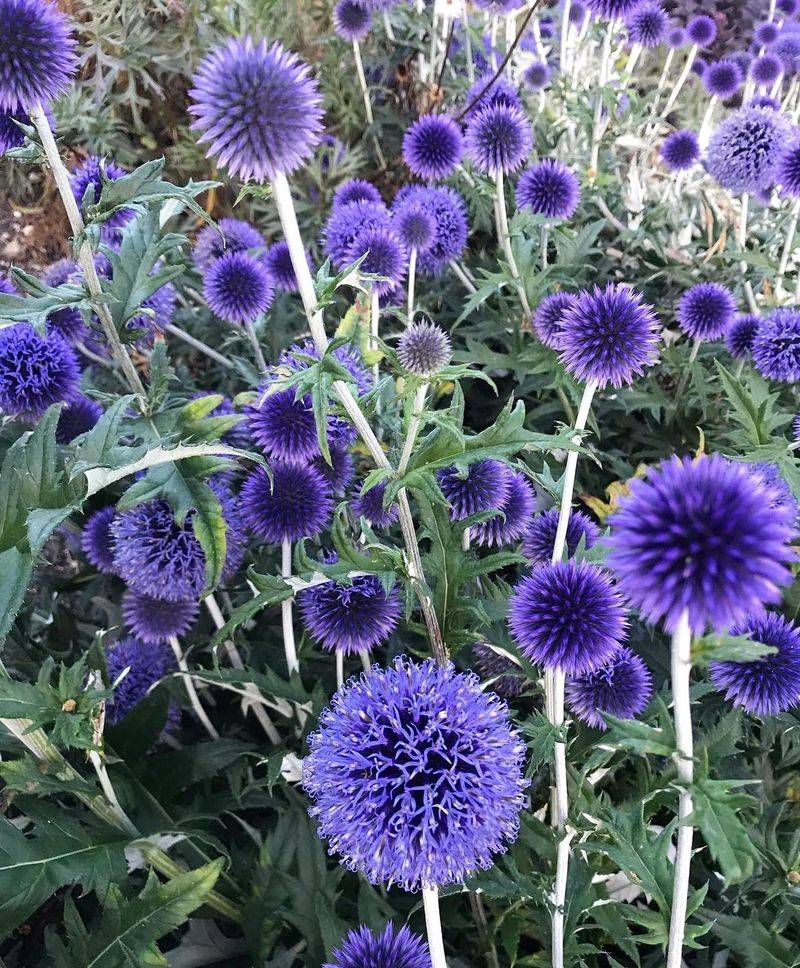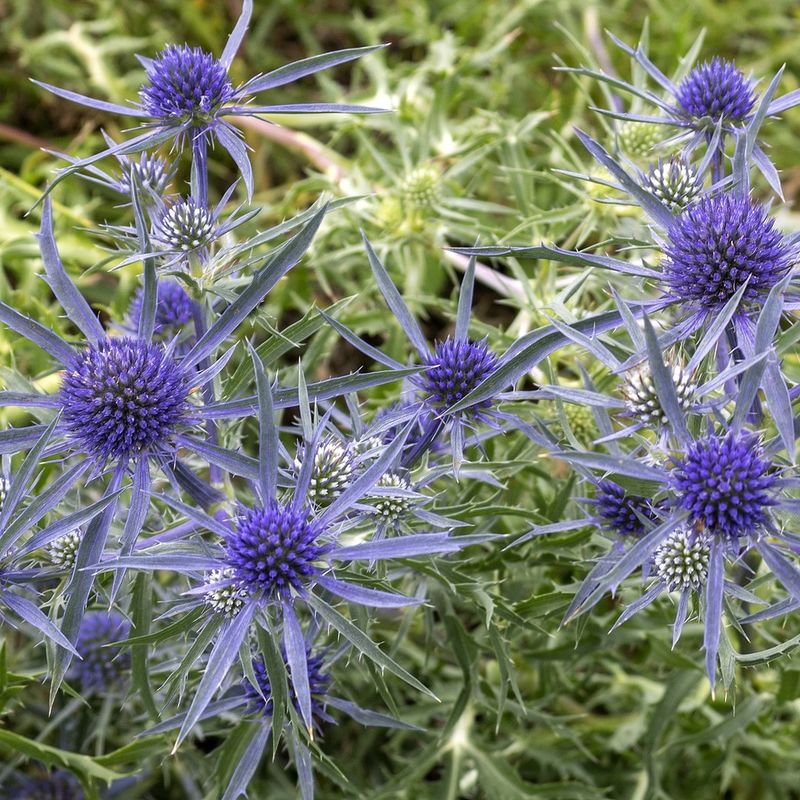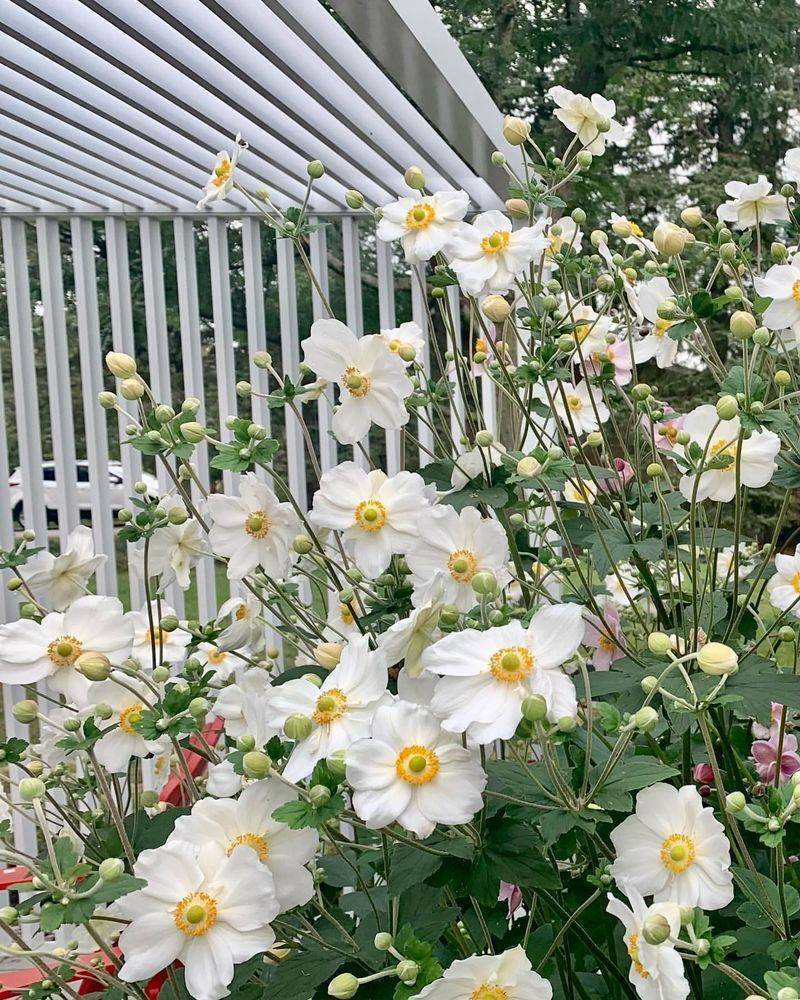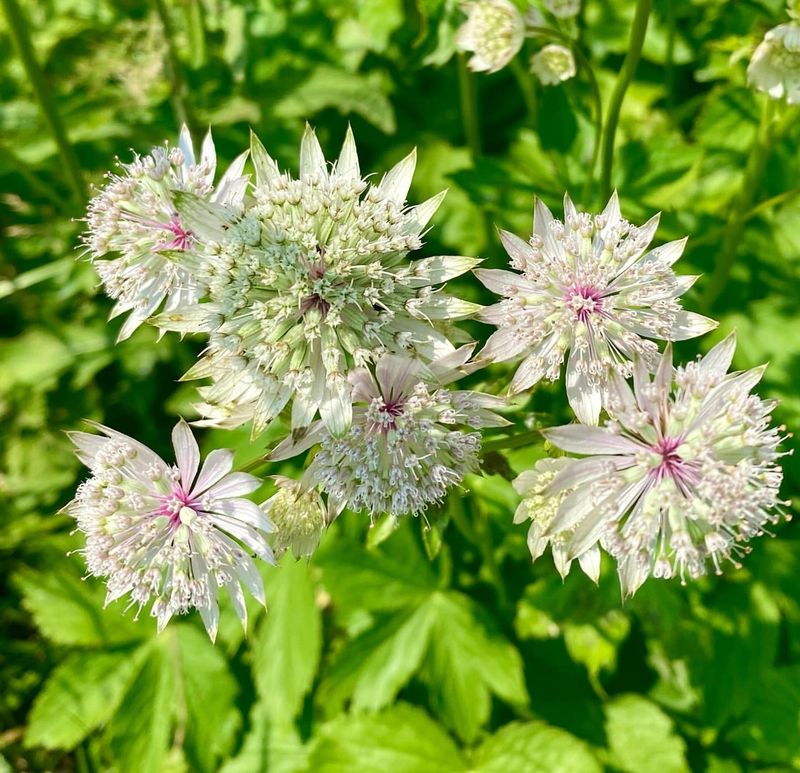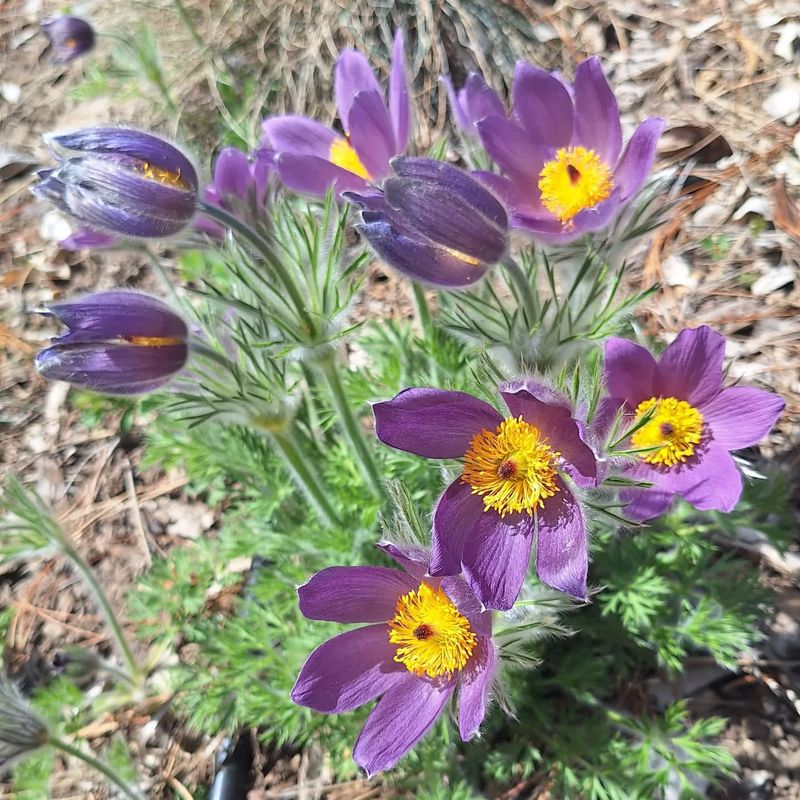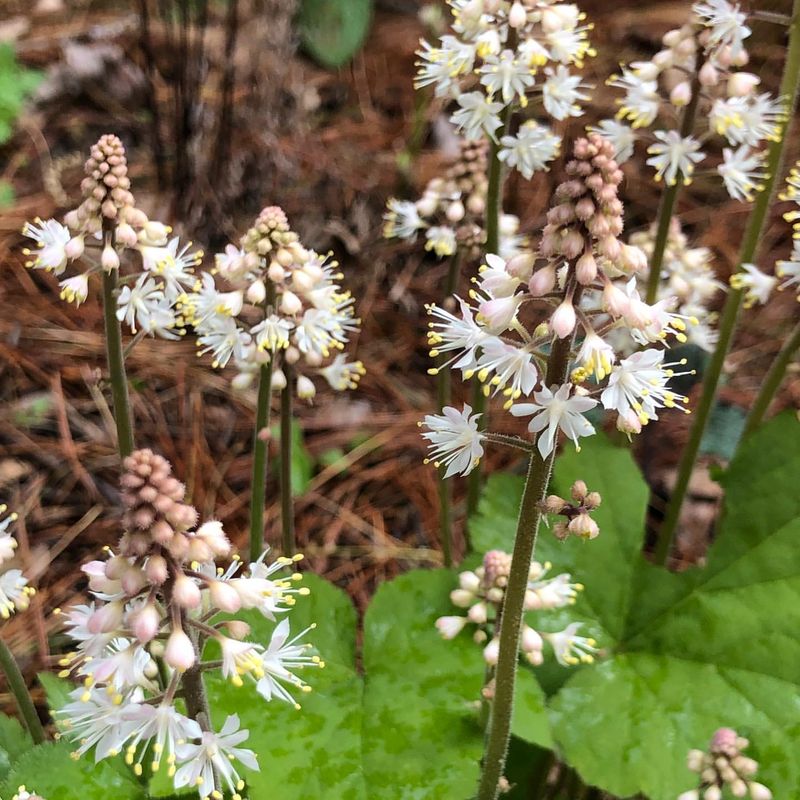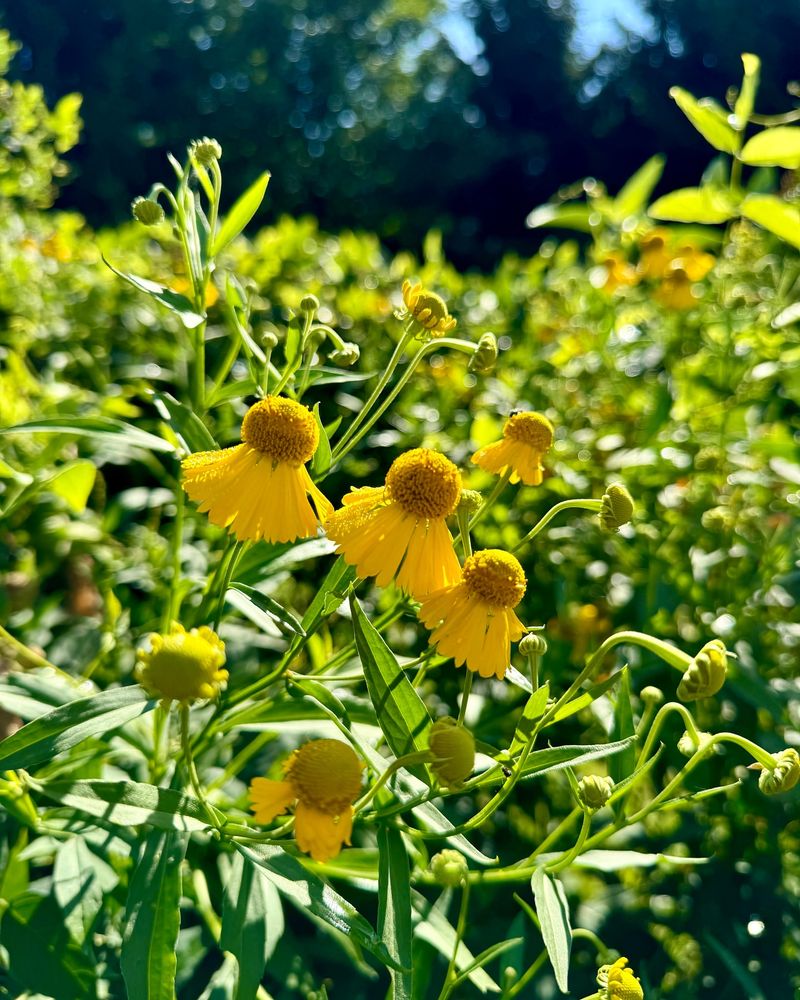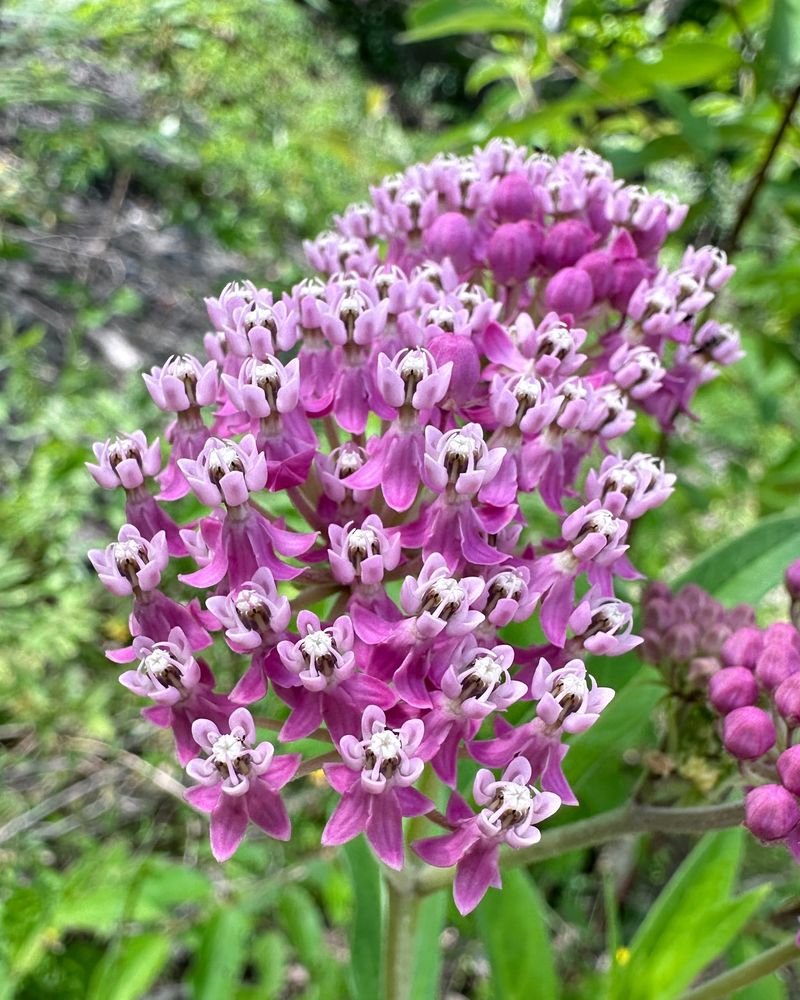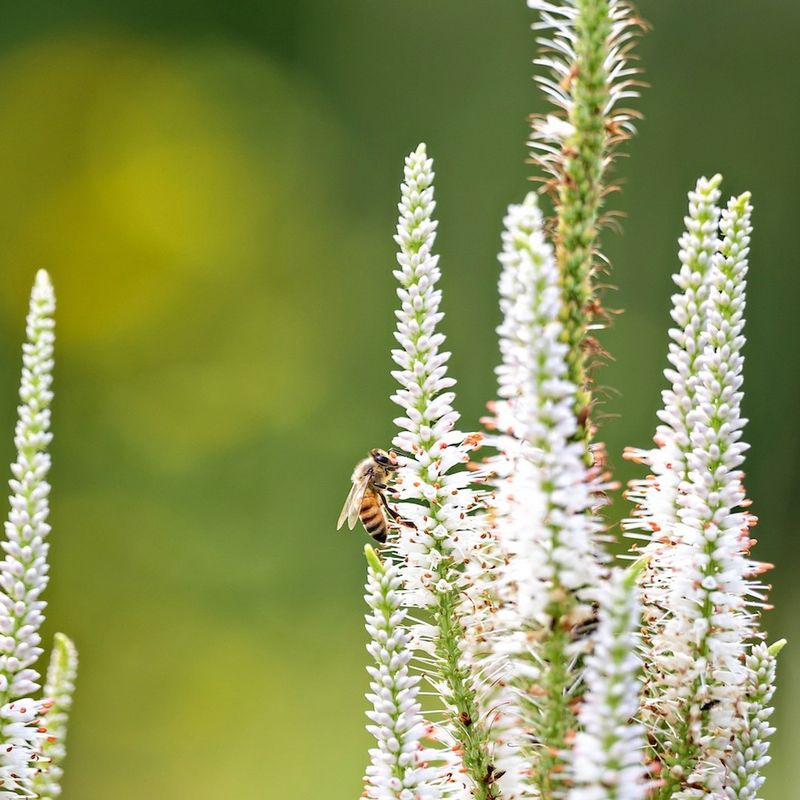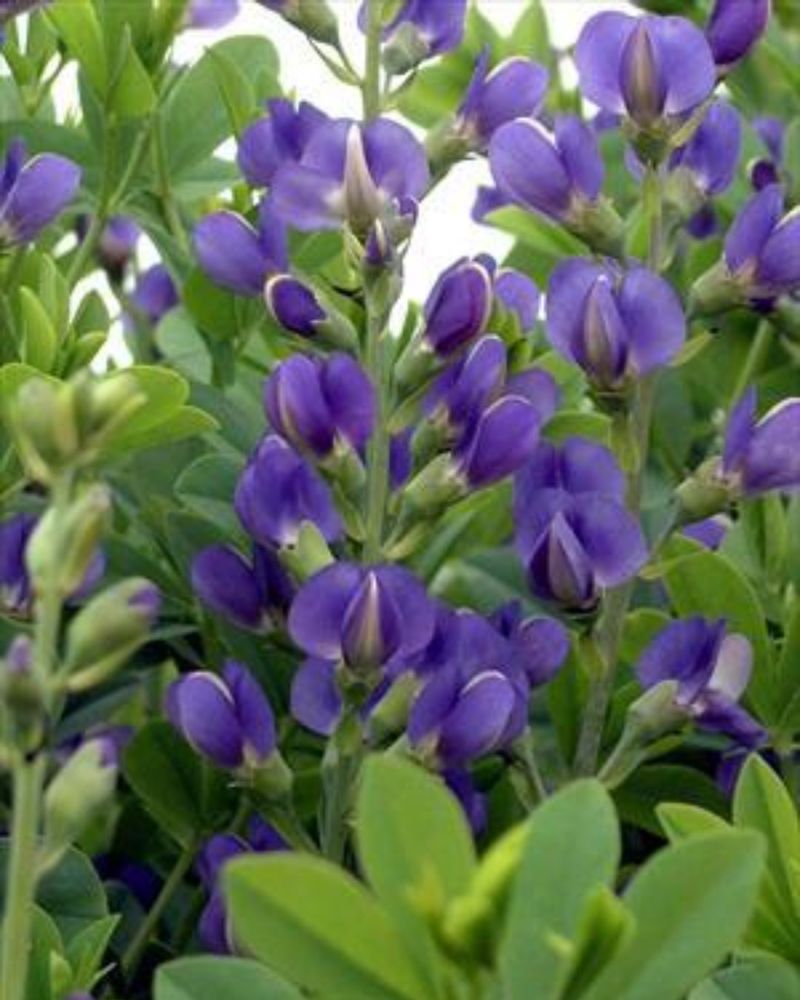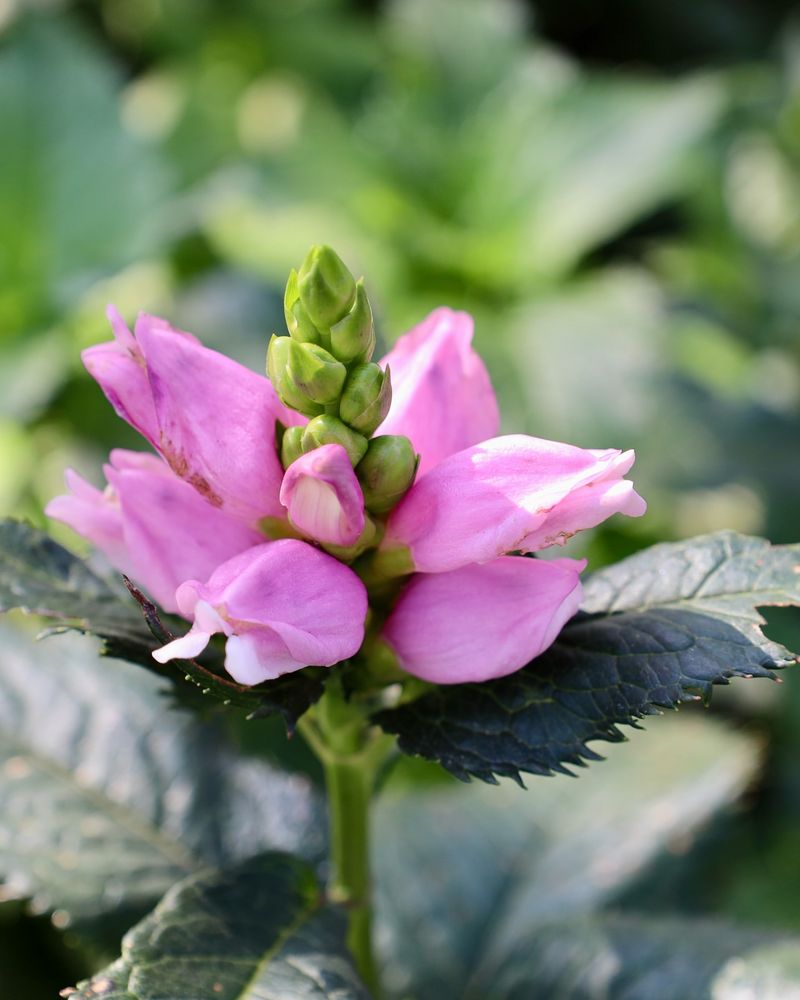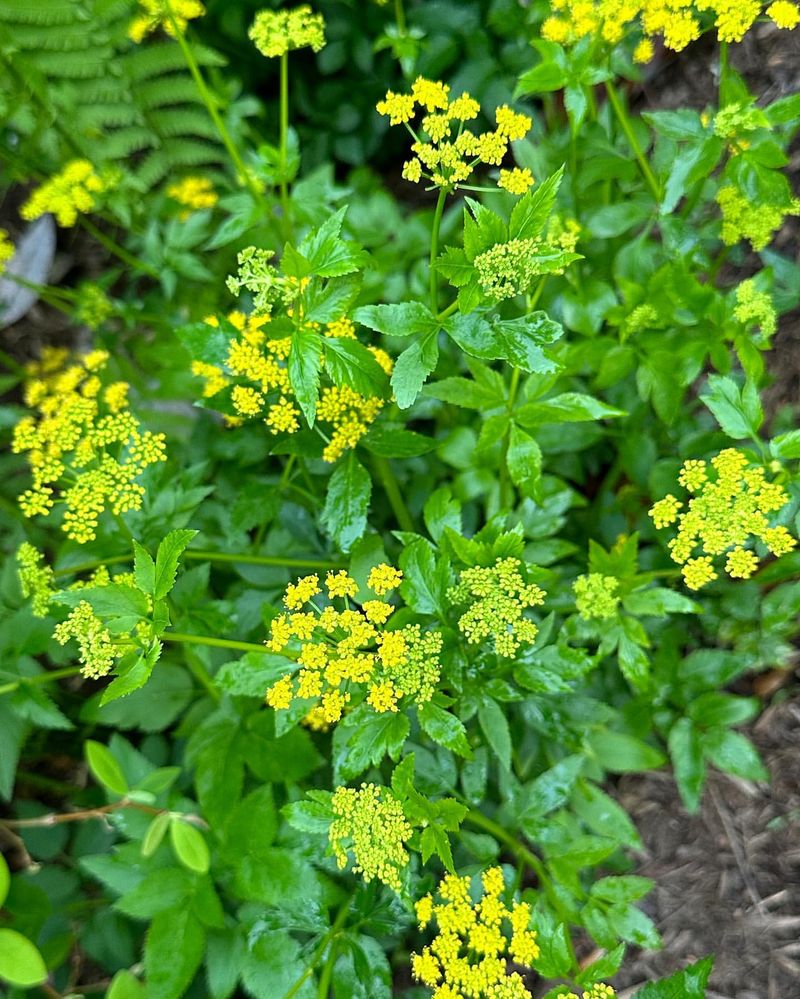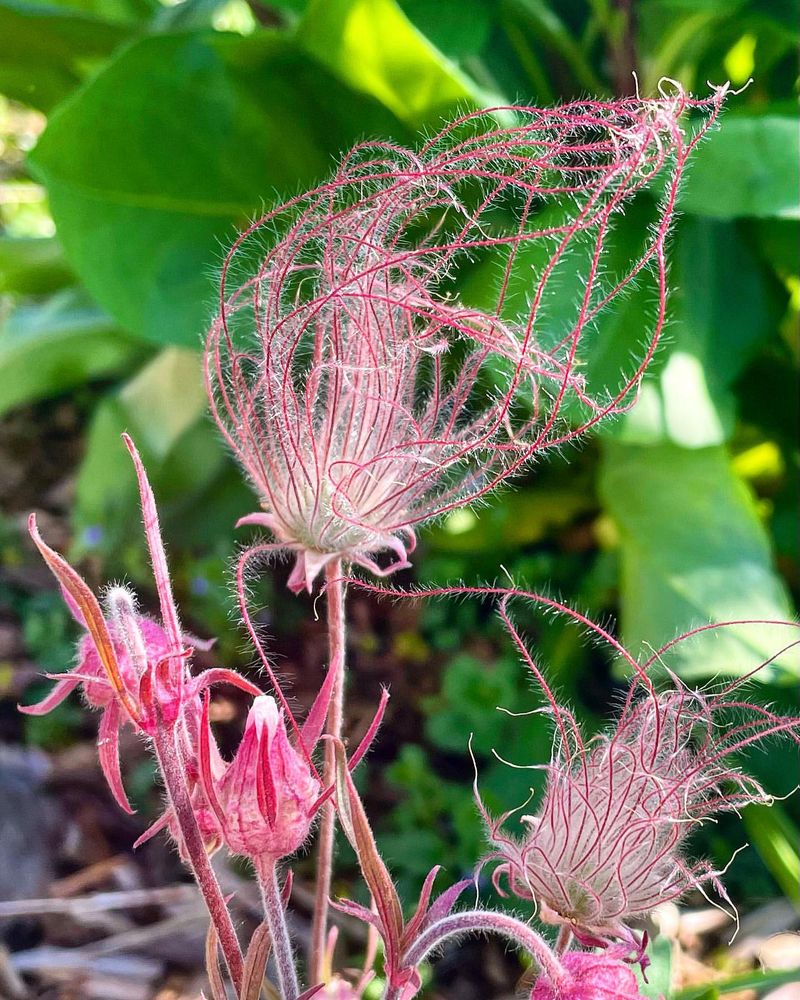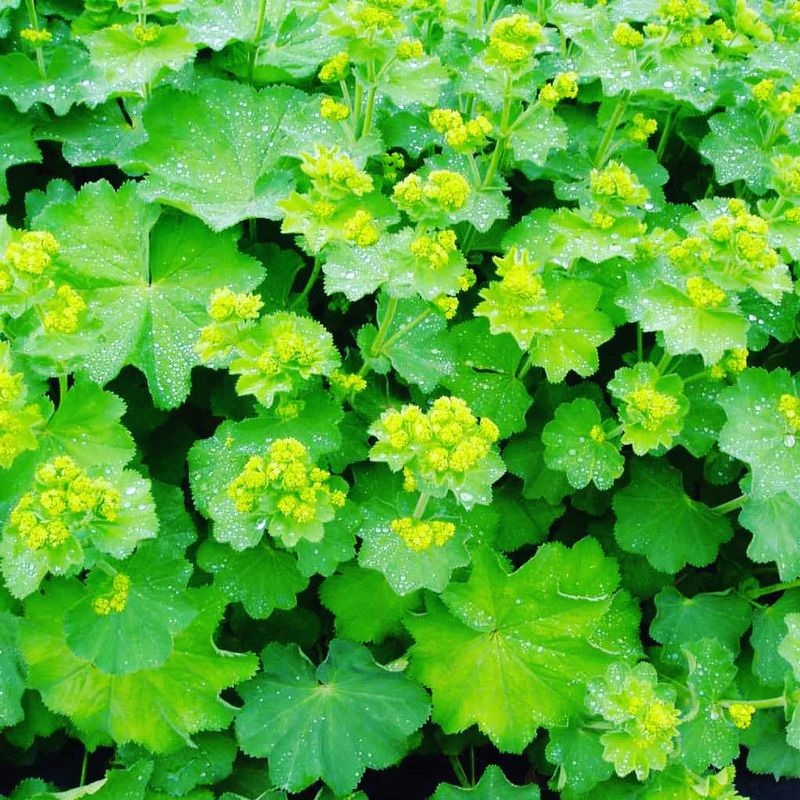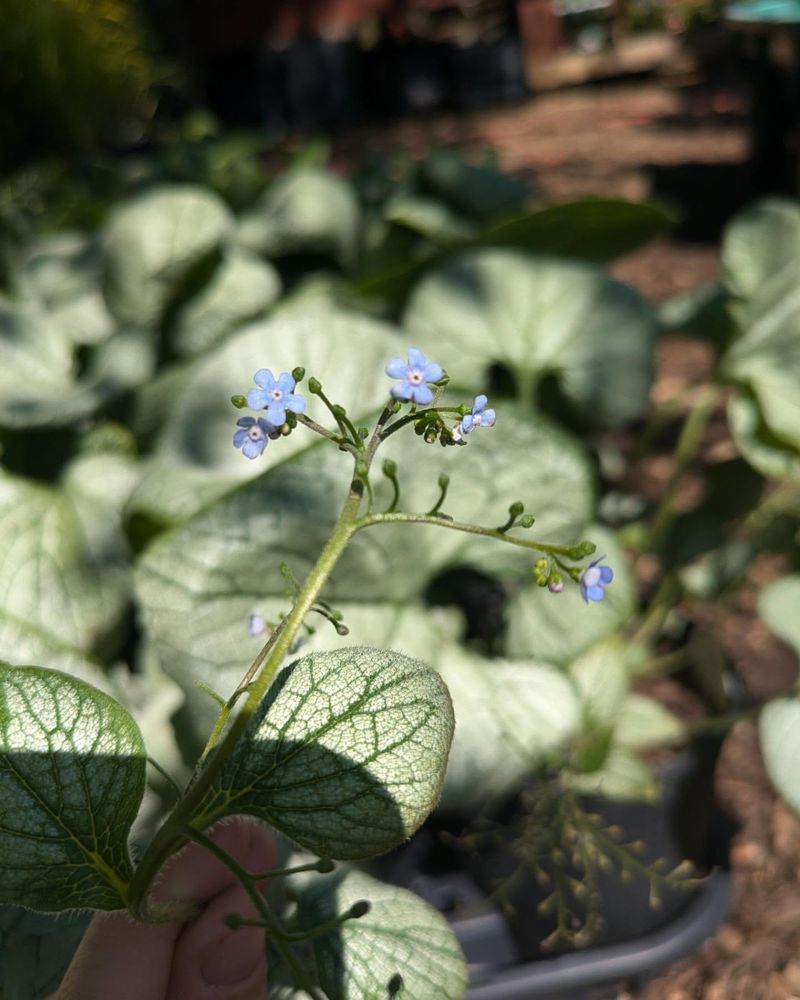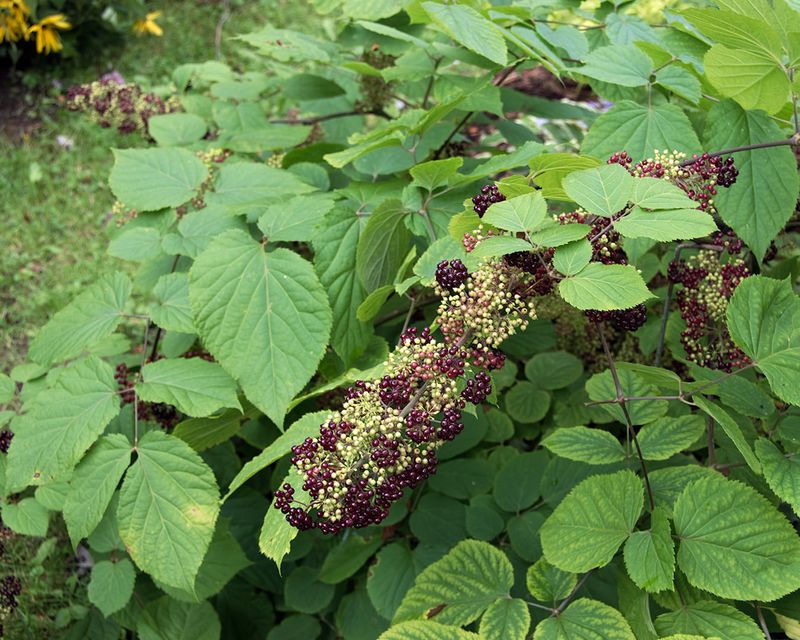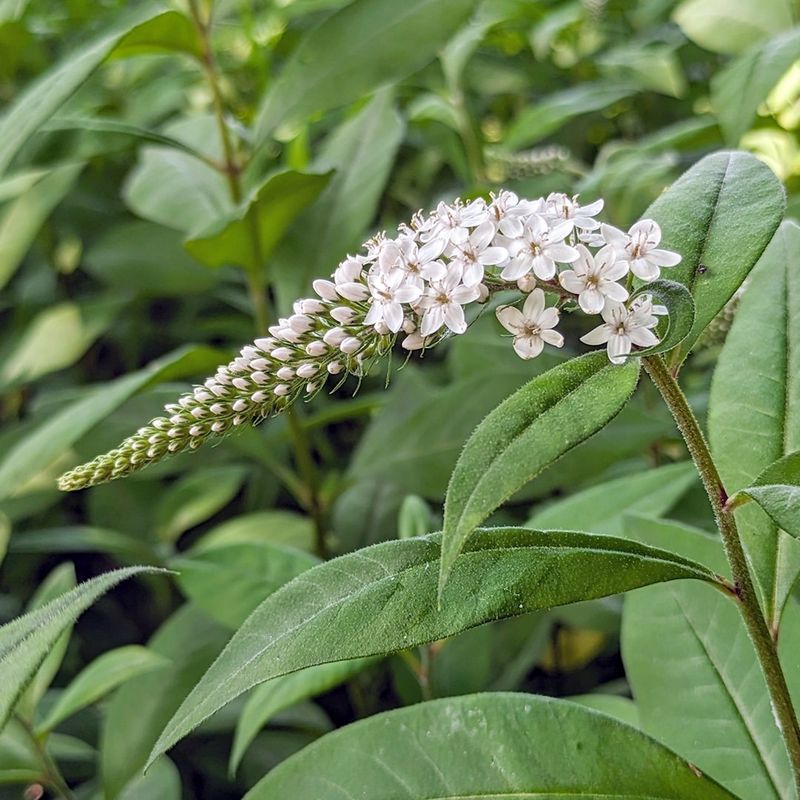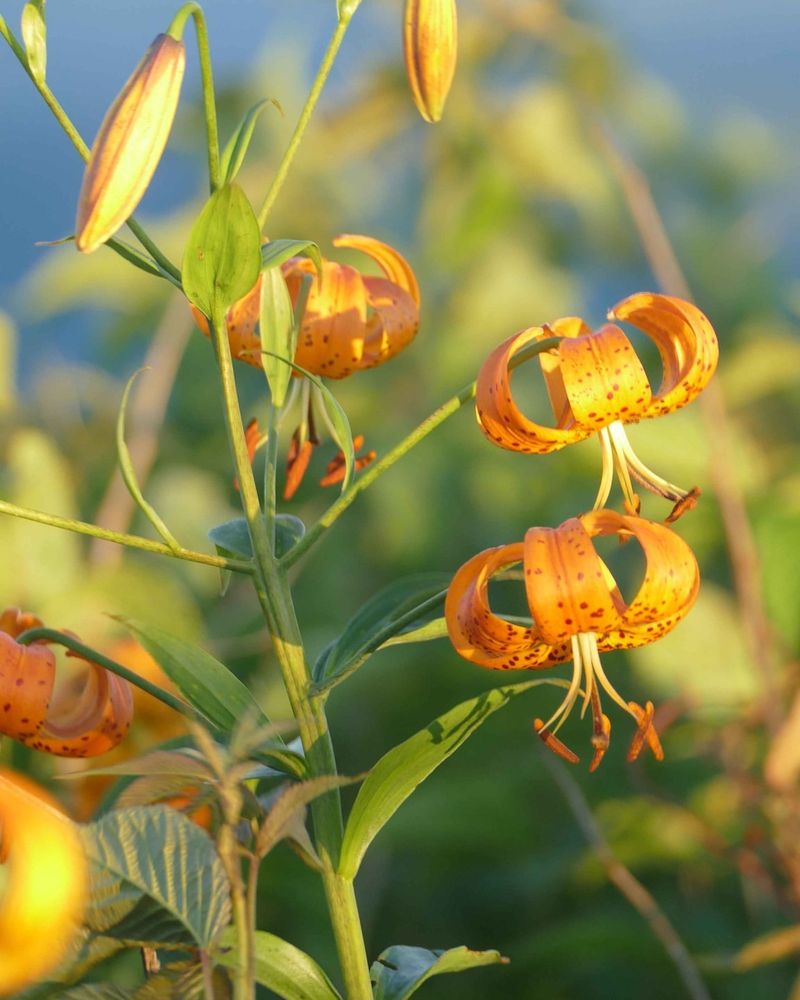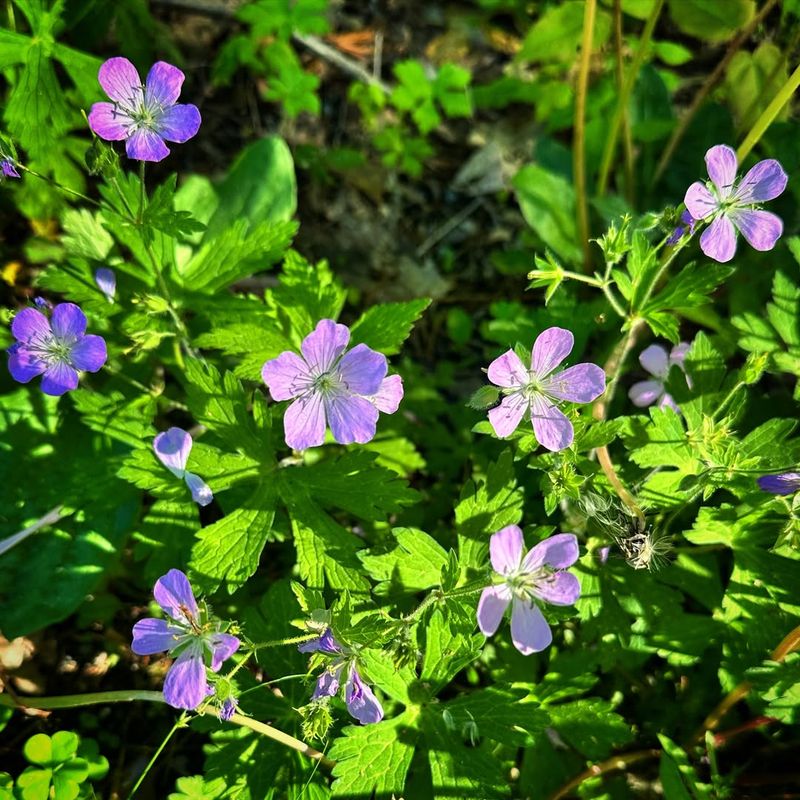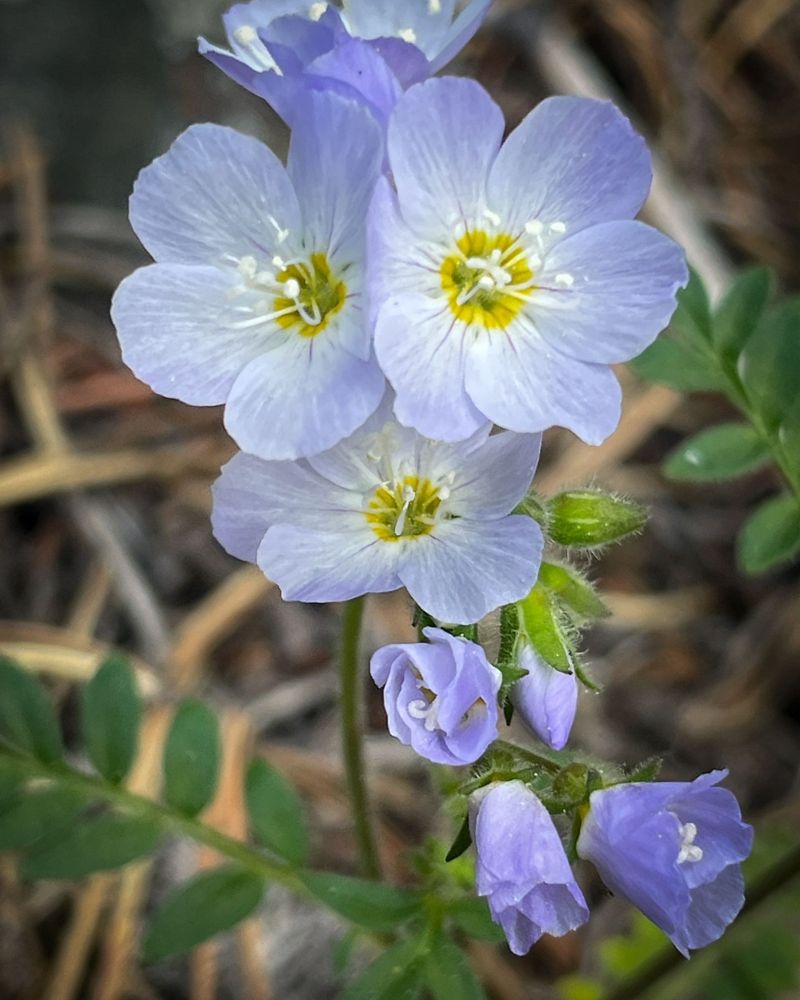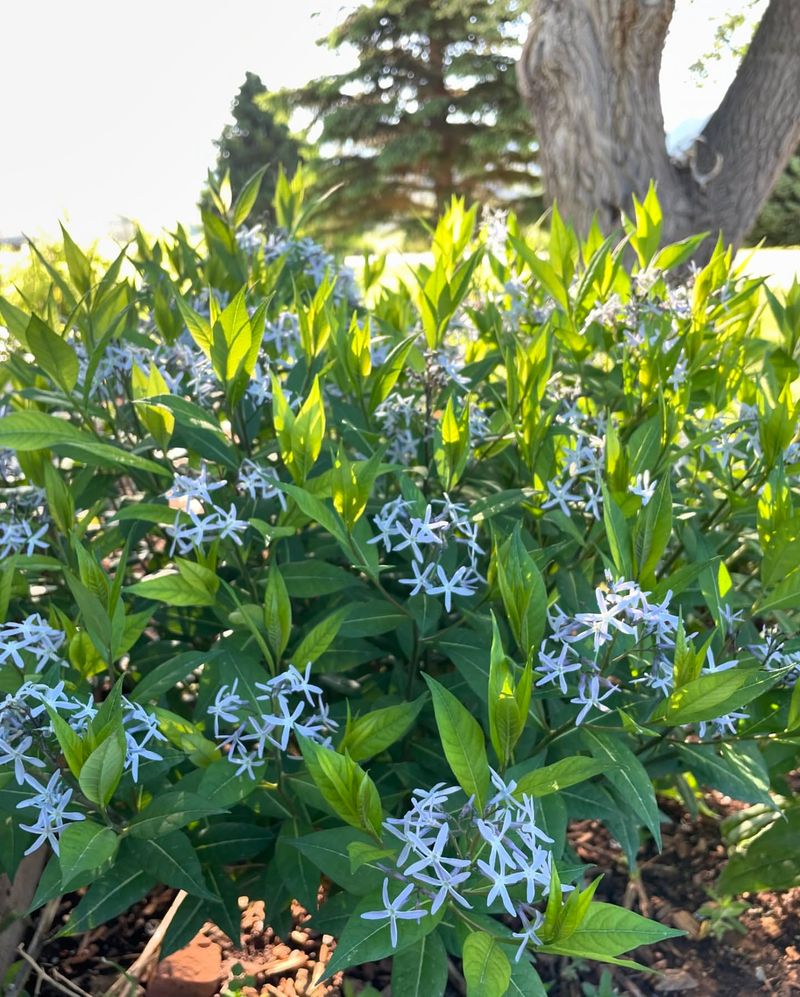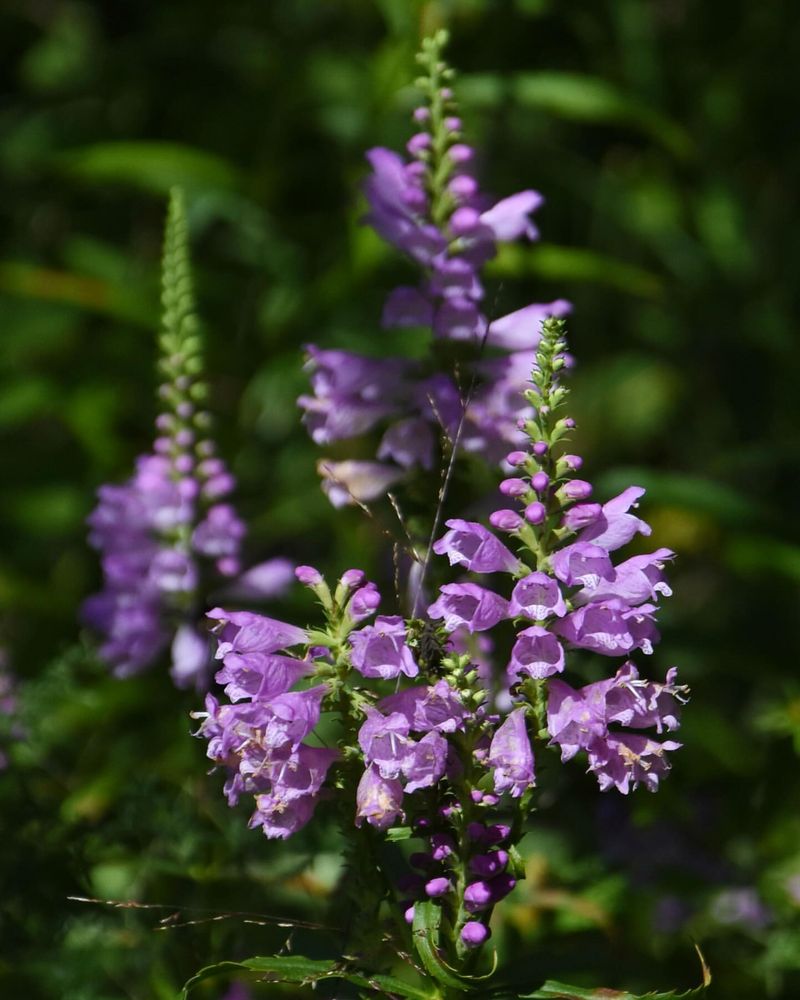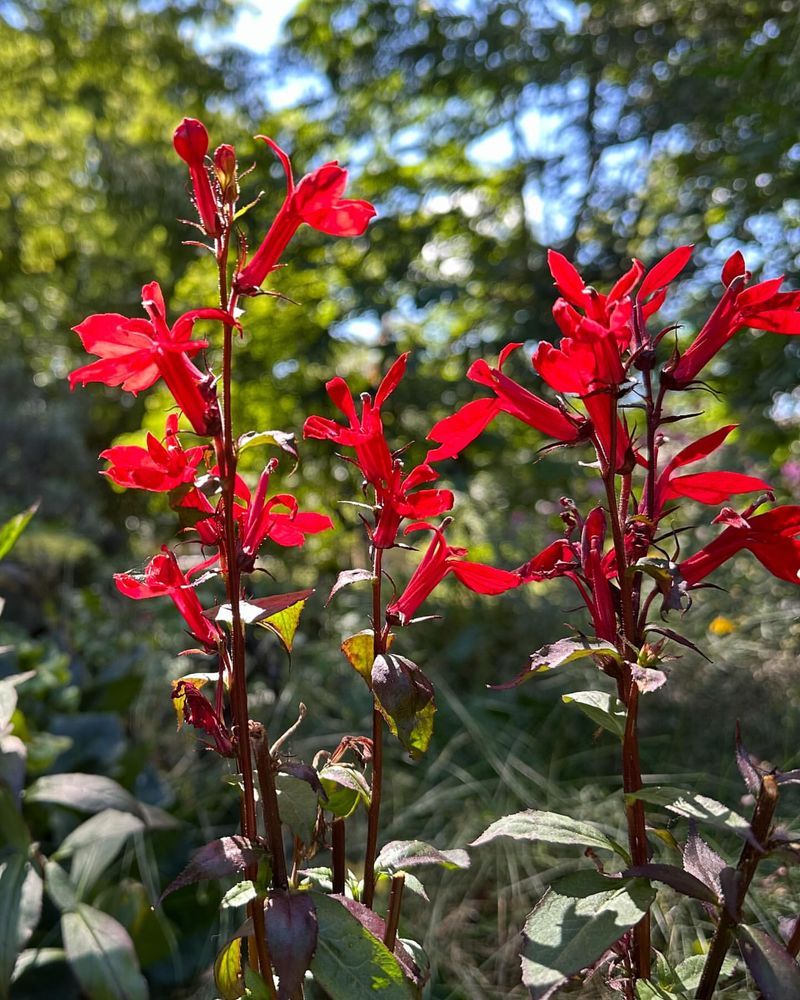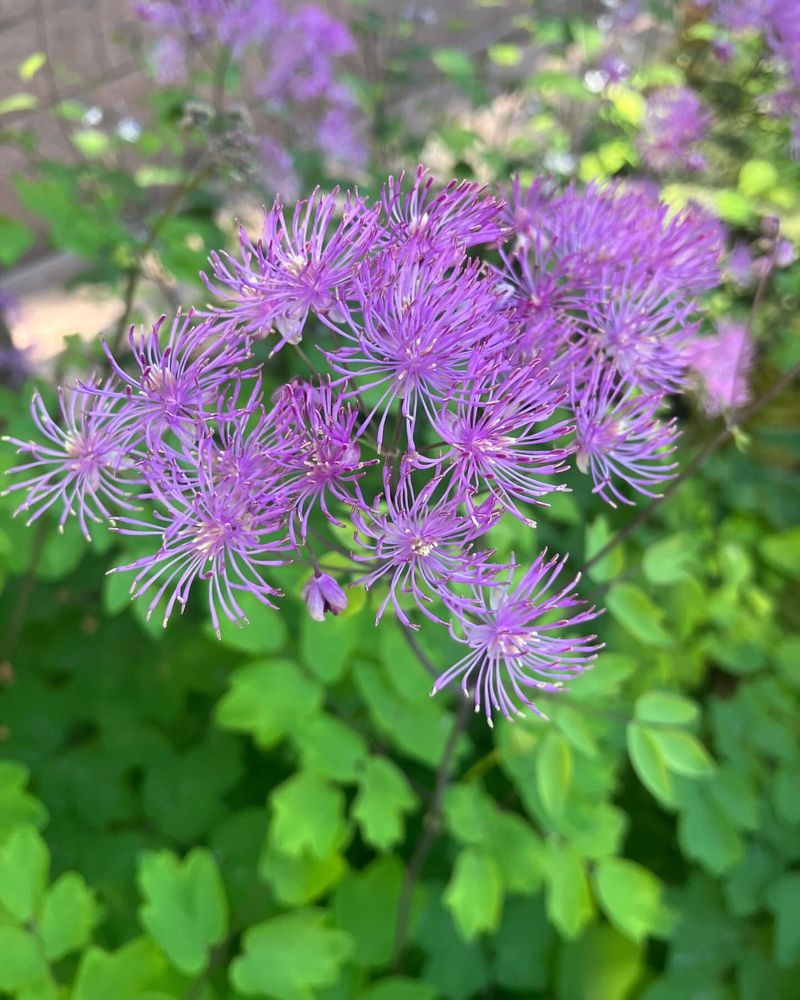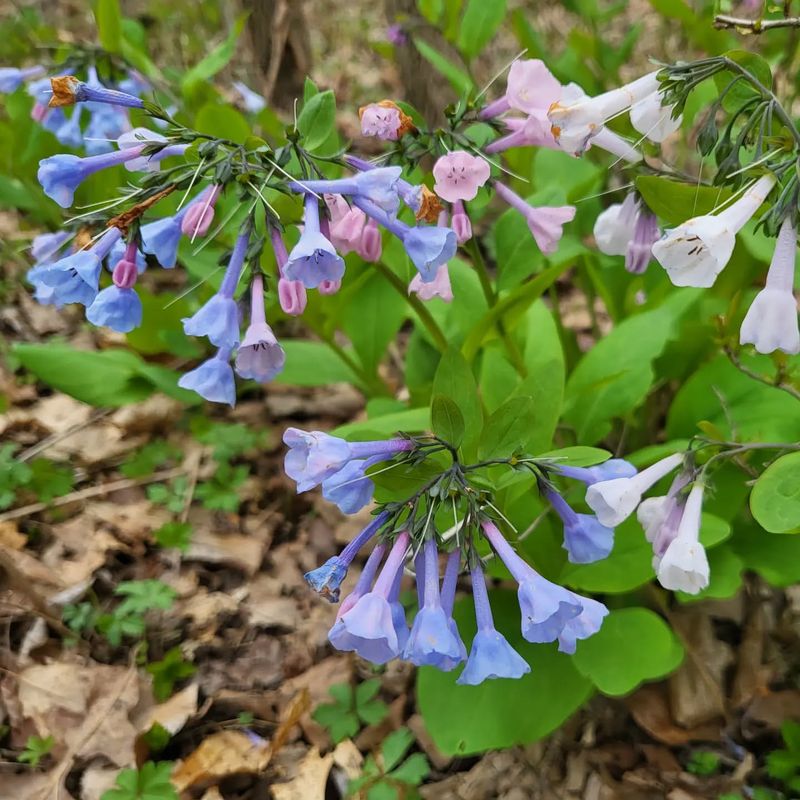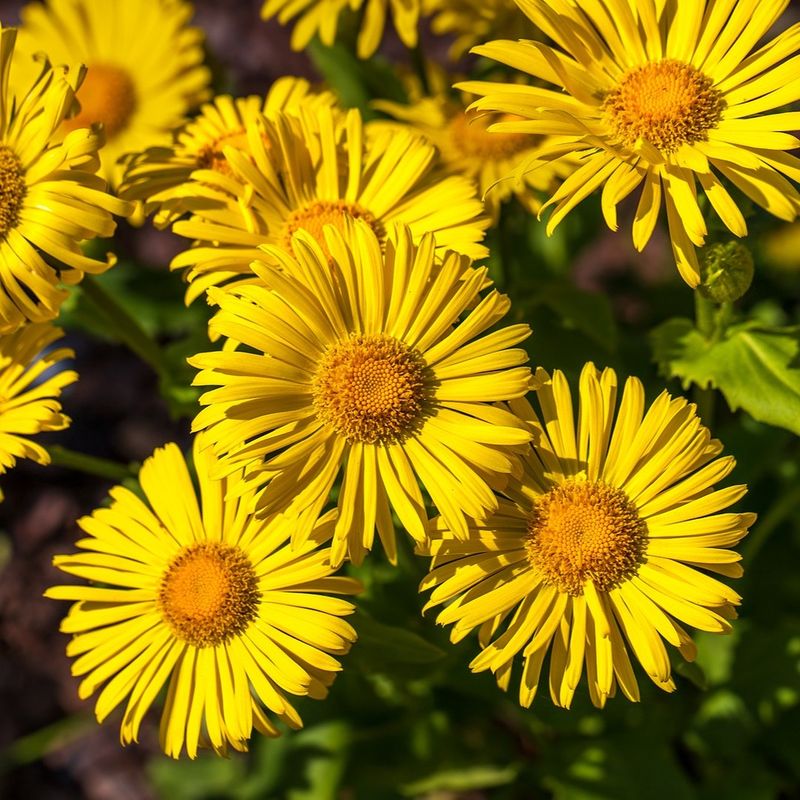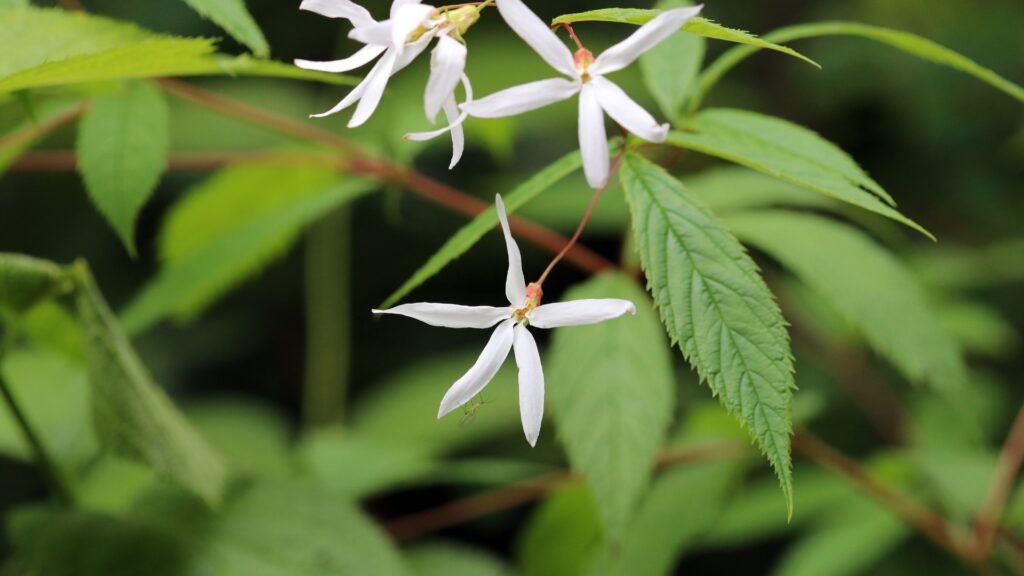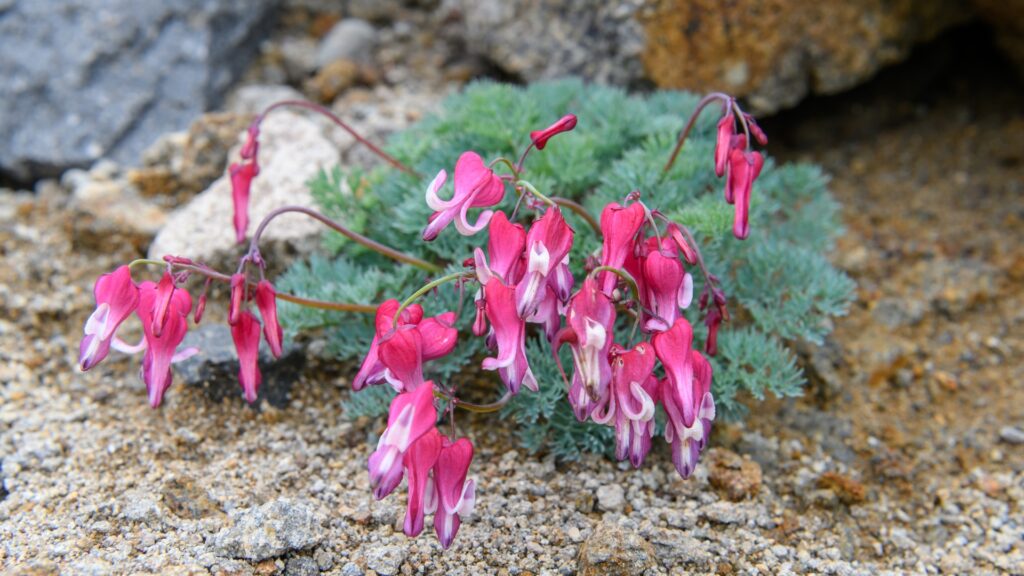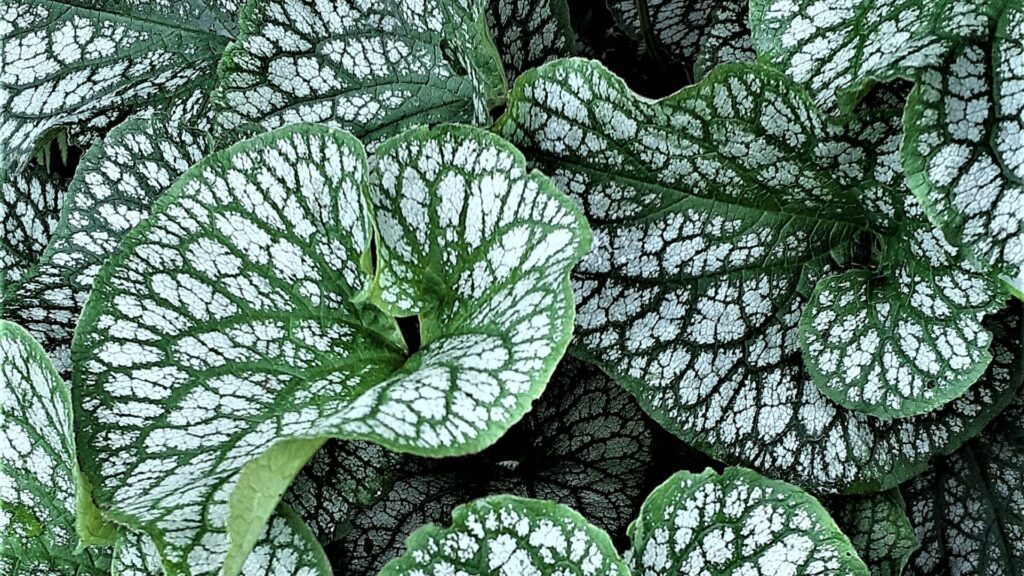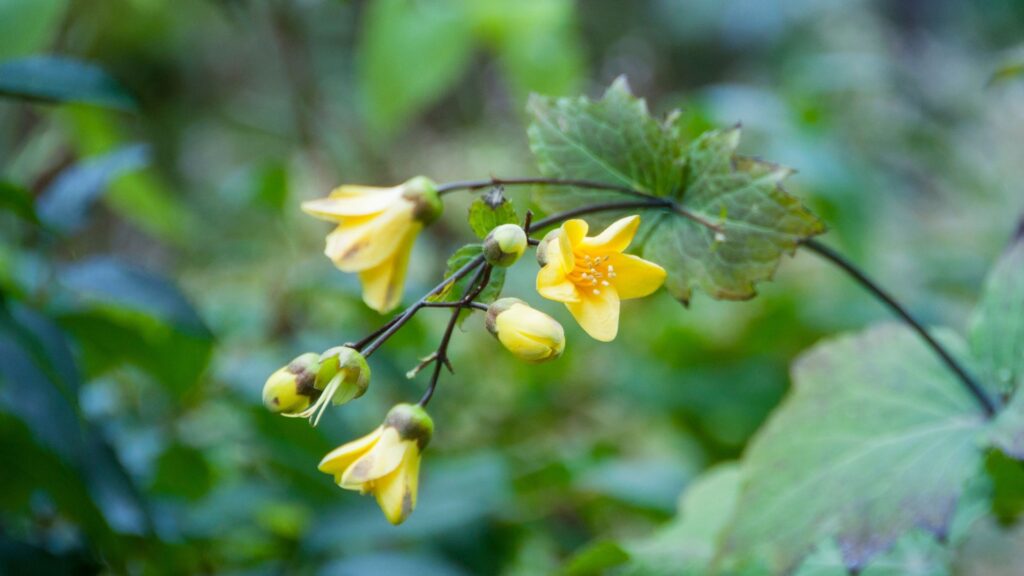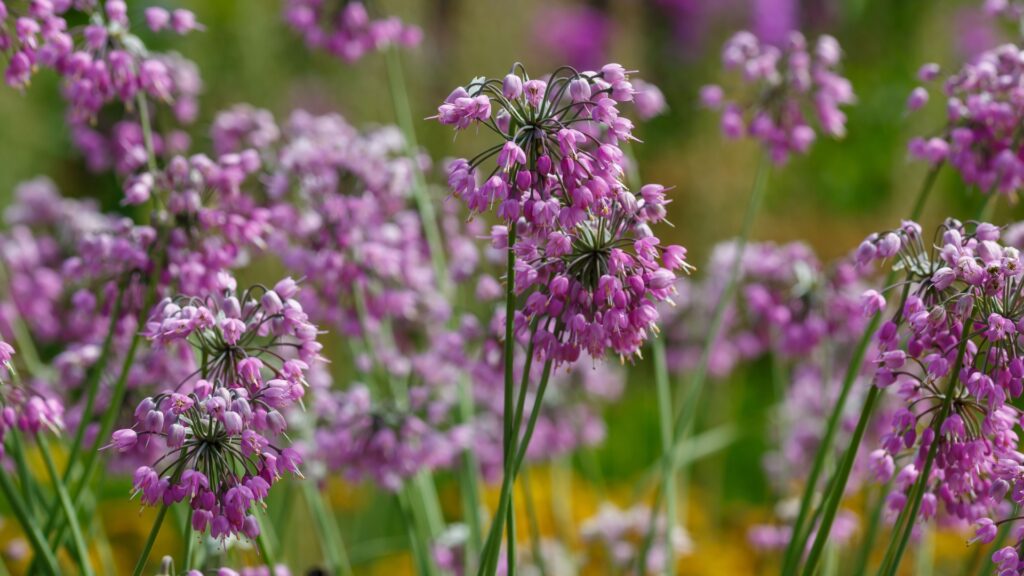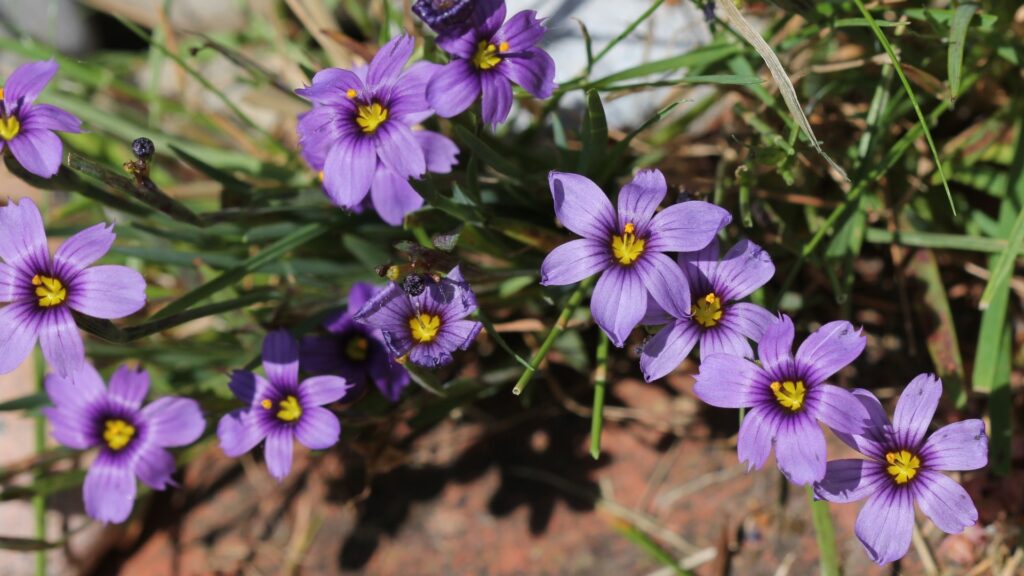In the garden spotlight, flashy annuals steal the show—but it’s the perennials quietly pulling the strings behind the scenes. Tough as nails and easy on the upkeep, these unsung heroes are the gift that keeps on blooming.
We’ve dug deep to uncover 35 hidden gems that add color, texture, and staying power to your landscape. These low-key legends deliver year after year—no diva behavior required. Ready to pull back the curtain and let these quiet stars shine? Let’s plant the seeds of lasting beauty.
1. Bugbane
Often overlooked in many gardens, bugbane stands out with its tall, feathery white spikes. This perennial, also known as Cimicifuga, enhances garden aesthetics with its striking appearance. Tall and elegant, bugbane thrives in partial shade and moist, well-drained soil.
Its foliage, a deep green, provides a lush backdrop that contrasts beautifully with its blooms. Bugbane’s late summer flowers attract pollinators, adding life to your garden. Suitable for shaded borders, it complements ferns and hostas well.
Consider incorporating bugbane into your garden for a touch of elegance and a boost to biodiversity.
2. Bear’s Breeches
For a touch of grandeur, Bear’s Breeches offers an architectural presence. Its scientific name, Acanthus mollis, hints at its classic elegance.
This perennial features large, glossy leaves and tall spikes of white flowers that captivate attention. Preferring full sun to partial shade, it flourishes in well-drained soil, making it versatile for various garden settings. Bear’s Breeches can serve as a focal point or as a backdrop plant in borders.
Embrace this perennial to bring a historical and sophisticated element to your garden’s landscape.
3. Gas Plant
Radiating charm, the Gas Plant is known for its stunning star-shaped blooms. Dictamnus albus, as it is scientifically termed, offers both visual and olfactory delight.
Its pink or white flowers appear in early summer, releasing a pleasant citrus fragrance. This perennial prefers full sun and is drought tolerant, making it low-maintenance. The Gas Plant’s unique ability to emit a flammable gas adds intrigue, though it remains perfectly safe in gardens.
Incorporating the Gas Plant can add both beauty and conversation-starting elements to your outdoor space.
4. Globe Thistle
Adding a touch of whimsy, Globe Thistle captivates with its spherical blooms. Echinops, its botanical name, offers intriguing blue or purple globes.
This perennial becomes a focal point with its eye-catching shape and color, thriving in full sun and poor soil. Its blooms attract pollinators, making it an excellent choice for biodiversity. Resistant to deer and drought, Globe Thistle is a resilient choice.
Integrate Globe Thistle into your garden to enjoy its playful, yet structured appearance and its contribution to a thriving ecosystem.
5. Sea Holly
Embrace a coastal vibe with Sea Holly, known for its unique, metallic blue flowers. Eryngium, its botanical name, offers spiky, textured blooms that stand out.
These perennials thrive in sandy, well-drained soil and full sun, ideal for xeriscaping. Sea Holly’s drought tolerance and deer resistance make it a practical choice. Its flowers attract bees, supporting pollinator populations.
Consider Sea Holly for a distinctive, low-maintenance addition that brings vivid color and texture to your garden, enhancing both beauty and ecological value.
6. Japanese Anemone
For a touch of elegance, Japanese Anemone provides a graceful presence. Anemone hupehensis, its scientific name, blooms with charming pink or white flowers.
Thriving in partial shade and moist, well-drained soil, it’s a late-season bloomer that extends garden interest into autumn. This perennial is perfect for borders or woodland gardens, adding a soft, romantic feel. Its flowers attract butterflies, enhancing biodiversity.
Incorporate Japanese Anemone into your garden to enjoy its delicate beauty and the extended flowering season it offers.
7. Masterwort
Infuse your garden with subtle charm through Masterwort. Astrantia, as it’s botanically known, captivates with star-shaped blooms.
These delicate flowers, often in shades of pink or white, appear throughout summer, offering continuous interest. Masterwort thrives in moist, well-drained soil and partial shade, making it suitable for woodland or cottage gardens. Its flowers attract pollinators, supporting garden biodiversity.
Consider Masterwort for a perennial that offers both beauty and ecological benefits, adding a touch of understated elegance to your green space.
8. Pasque Flower
Heralding spring, Pasque Flower emerges with enchanting purple blooms. Pulsatilla vulgaris, its official name, brings early color to gardens.
Its bell-shaped flowers and fuzzy foliage make it a unique addition. Preferring full sun and well-drained soil, it’s ideal for rock gardens or borders. The plant is deer-resistant and attracts pollinators, enhancing garden biodiversity.
Incorporate Pasque Flower to enjoy early-season beauty and a touch of whimsy. Its hardiness and low-maintenance nature make it a valuable perennial for any garden setting.
9. Foam Flower
For delicate beauty, Foam Flower offers small, frothy blooms. Tiarella, its botanical name, enchants with its airy spikes of white flowers.
Thriving in partial to full shade, it’s perfect for woodland gardens or shady borders. Foam Flower’s foliage forms a neat groundcover, adding texture and color even when not in bloom. Its flowers attract pollinators, supporting biodiversity in shaded areas.
Consider Foam Flower for a perennial that adds lightness and texture to your garden, particularly in shaded spots needing a touch of brightness.
10. Sneezeweed
Brighten your garden with Sneezeweed, a cheerful perennial. Helenium, its scientific name, produces daisy-like yellow or orange flowers.
Blooming in late summer, it thrives in full sun and moist soil, adding vibrant color when other perennials fade. Sneezeweed’s flowers attract pollinators, enhancing ecological value. It’s resistant to deer, making it a practical choice for many gardens.
Incorporate Sneezeweed to enjoy its bold color and easy maintenance, ensuring your garden remains lively and inviting well into the late season.
11. Swamp Milkweed
Enhance your garden with Swamp Milkweed, a versatile perennial. Asclepias incarnata, its botanical name, is known for clusters of pink flowers.
Ideal for wet areas, it thrives in full sun to partial shade. Swamp Milkweed is essential for monarch butterflies, providing habitat and nectar. Its fragrant blooms attract various pollinators, adding ecological value.
Consider Swamp Milkweed for a garden addition that supports wildlife and offers beautiful blooms. It’s perfect for rain gardens or near water features, blending functionality with aesthetic appeal.
12. Culver’s Root
Create vertical interest with Culver’s Root, a stately perennial. Also known as Veronicastrum virginicum, it’s recognized by its tall, white flower spikes.
This plant thrives in full sun to partial shade and prefers moist, well-drained soil. Culver’s Root’s blooms attract bees and butterflies, supporting a healthy garden ecosystem. It’s ideal for naturalistic plantings or meadow-style gardens, adding height and structure.
Incorporate Culver’s Root for a perennial that offers elegance and ecological benefits, enhancing both the visual and environmental value of your garden.
13. False Indigo
Introduce color with False Indigo, a bold perennial. Baptisia australis, its scientific name, offers tall spires of indigo-blue flowers.
Blooming in late spring, it thrives in full sun and well-drained soil. Its flowers attract pollinators while its bushy form adds structure to gardens. False Indigo is drought-tolerant and deer-resistant, making it a practical choice for various settings.
Consider False Indigo for a perennial that combines striking color with resilience, ensuring your garden is both beautiful and low-maintenance.
14. Turtlehead
For a whimsical touch, Turtlehead offers unique blooms. Chelone, known for flowers resembling turtle heads, provides visual interest.
Thriving in moist, well-drained soil and partial to full shade, it’s ideal for woodland gardens or wet areas. Turtlehead’s blooms attract butterflies, enhancing garden biodiversity. Its bushy form adds texture and structure.
Incorporate Turtlehead for a perennial that brings charm and ecological benefits, making your garden lively and visually appealing throughout the growing season.
15. Golden Alexander
Brighten any space with Golden Alexander, a cheerful perennial. Zizia aurea, its scientific name, is noted for its clusters of yellow flowers.
This plant thrives in full sun to partial shade and prefers moist, well-drained soil. Blooming in late spring, it attracts pollinators, supporting biodiversity. Golden Alexander is suitable for meadows, borders, or rain gardens.
Consider adding Golden Alexander to your garden for a burst of color and ecological benefits, enhancing the visual appeal and environmental health of your outdoor space.
16. Prairie Smoke
Introduce a unique flair with Prairie Smoke, known for its feathery pink blooms. Geum triflorum, its botanical name, offers whimsical beauty.
Preferring full sun and well-drained soil, it’s ideal for rock gardens or prairies. Prairie Smoke’s blooms attract pollinators, supporting garden biodiversity. Its seed heads are equally attractive, offering visual interest even after flowering.
Incorporate Prairie Smoke to enjoy a perennial that provides both distinctive aesthetics and ecological value, enriching your garden with its unusual charm.
17. Lady’s Mantle
For understated elegance, Lady’s Mantle offers soft beauty. Alchemilla mollis, its scientific name, features velvety green leaves.
This perennial thrives in partial shade and moist, well-drained soil, making it suitable for borders or as groundcover. Its yellow-green flowers bloom in early summer, adding subtle color and texture. Lady’s Mantle’s foliage catches dew, adding visual interest.
Consider Lady’s Mantle for a perennial that combines beauty with versatility, enhancing your garden with its gentle charm and practical attributes.
18. Siberian Bugloss
For a splash of color in shade, Siberian Bugloss stands out. Brunnera macrophylla, its botanical name, offers charming blue flowers.
Thriving in partial to full shade, it’s perfect for woodland or shade gardens. Siberian Bugloss’s heart-shaped leaves add texture even when not in bloom. It’s low-maintenance and deer-resistant, making it a practical choice.
Incorporate Siberian Bugloss for a perennial that combines vibrant color with shade-loving resilience, ensuring your garden remains beautiful and lively even in shadowy areas.
19. Spikenard
Introduce lush texture with Spikenard, known for its broad leaves. Aralia racemosa, its scientific name, features clusters of tiny white flowers.
Preferring partial shade and moist, well-drained soil, it’s ideal for woodland gardens or shaded borders. Spikenard’s lush foliage adds depth and richness to garden settings. Its berries attract birds, enhancing ecological value.
Consider Spikenard for a perennial that offers both beauty and biodiversity, enriching your garden with its lush growth and wildlife-friendly attributes.
20. Gooseneck Loosestrife
Add dynamic movement with Gooseneck Loosestrife, a perennial with arching spikes. Lysimachia clethroides, its botanical name, offers unique white flowers.
This plant thrives in full sun to partial shade and prefers moist soil. Its blooms create a wave-like effect, adding visual interest and texture. Gooseneck Loosestrife is great for borders or as a groundcover.
Consider this perennial for a garden that offers unique motion and beauty, with its easily recognizable form creating a standout feature in your landscape.
21. Turk’s Cap Lily
For vibrant color, Turk’s Cap Lily offers striking blooms. Lilium superbum, its botanical name, features bright orange flowers.
This perennial thrives in full sun to partial shade and well-drained soil. Its distinctive recurved petals and dotted patterns make it a standout. The flowers attract pollinators, supporting garden biodiversity.
Incorporate Turk’s Cap Lily for a burst of color and unique form, adding both beauty and ecological value to your garden, enhancing its overall appeal and functionality.
22. Wild Geranium
For a woodland feel, Wild Geranium brings natural charm. Geranium maculatum, its scientific name, features pink flowers.
Thriving in partial shade and moist soil, it’s ideal for woodland or naturalized gardens. Wild Geranium’s flowers attract pollinators and its foliage provides groundcover. It’s low-maintenance, making it practical for many settings.
Consider Wild Geranium to enjoy a perennial that combines delicate beauty with ecological benefits, enhancing your garden’s biodiversity and visual interest.
23. Jacob’s Ladder
Enhance shaded areas with Jacob’s Ladder, a charming perennial. Polemonium caeruleum, its botanical name, offers clusters of blue flowers.
This plant thrives in partial shade and moist, well-drained soil, perfect for woodland gardens. Jacob’s Ladder’s arching stems and variegated foliage add both texture and color. Its flowers attract pollinators, supporting biodiversity.
Incorporate Jacob’s Ladder for a garden that offers beauty and ecological value, enriching shaded areas with its distinctive form and vibrant blooms.
24. Blue Star
Light up your garden with Blue Star, known for its soft blue flowers. Amsonia, its botanical name, offers clusters of blooms.
Thriving in full sun to partial shade, it prefers well-drained soil and adds softness with its feathery foliage. Blue Star’s blooms attract pollinators, enhancing garden biodiversity. It’s drought-tolerant, making it suitable for various settings.
Consider Blue Star for a perennial that combines subtle beauty with resilience, ensuring your garden remains vibrant and inviting throughout the growing season.
25. Obedient Plant
For structural elegance, Obedient Plant offers tall, tubular blooms. Physostegia virginiana, its scientific name, features pink flowers.
This perennial thrives in full sun to partial shade and moist soil. Its flowers add height and color, making it suitable for borders or naturalized gardens. Obedient Plant’s blooms attract pollinators, supporting biodiversity.
Incorporate this perennial to enjoy a garden filled with vibrant color and architectural interest, enhancing both the beauty and ecological health of your outdoor space.
26. Cardinal Flower
Introduce vivid color with Cardinal Flower, a striking perennial. Lobelia cardinalis, its botanical name, features bright red blooms.
Thriving in full sun to partial shade and moist soil, it’s ideal for wet areas or water gardens. Cardinal Flower’s vibrant flowers attract hummingbirds, enhancing wildlife value. Its upright form adds height and drama.
Consider Cardinal Flower for a perennial that combines bold color with ecological benefits, ensuring your garden is both visually stunning and supportive of wildlife.
27. Meadow Rue
For delicate elegance, Meadow Rue offers airy blooms. Thalictrum, its botanical name, features purple flowers.
This perennial thrives in partial shade and moist, well-drained soil, perfect for naturalistic settings. Meadow Rue’s fern-like foliage provides texture, complementing its flowers. Its blooms attract pollinators, supporting biodiversity.
Incorporate Meadow Rue for a garden that combines subtle beauty with ecological value, enhancing your landscape with its graceful appearance and environmental benefits.
28. Virginia Bluebells
Infuse spring color with Virginia Bluebells, a charming perennial. Mertensia virginica, its botanical name, features clusters of blue flowers.
This plant thrives in partial to full shade and moist soil, ideal for woodland gardens. Virginia Bluebells’ blooms attract early pollinators, supporting garden biodiversity. Its foliage dies back after flowering, allowing for companion planting.
Consider Virginia Bluebells for a garden that offers early-season beauty and ecological benefits, ensuring your garden is both vibrant and environmentally friendly.
29. Leopard’s Bane
For early-season brightness, Leopard’s Bane shines with yellow blooms. Doronicum, its botanical name, features daisy-like flowers.
This perennial thrives in full sun to partial shade and moist, well-drained soil. Leopard’s Bane’s flowers attract pollinators, supporting garden biodiversity. Its early bloom time adds color when other perennials are just waking up.
Incorporate Leopard’s Bane for a perennial that provides cheerful color and ecological benefits, kickstarting your garden’s growing season with vibrant beauty.
30. Bowman’s Root
Add gentle movement with Bowman’s Root, a graceful native perennial. Known botanically as Gillenia trifoliata, it features airy white flowers that dance in the breeze.
Thriving in partial shade and well-drained soil, Bowman’s Root is ideal for woodland edges or naturalistic plantings. Its reddish stems and delicate foliage provide interest even after blooming. The plant attracts pollinators, offering both visual charm and ecological benefit.
Consider Bowman’s Root for a perennial that brings lightness, motion, and subtle beauty to your garden while supporting local wildlife.
31. Fernleaf Bleeding Heart
For a romantic touch, Fernleaf Bleeding Heart enchants with its delicate blooms. Dicentra eximia, its botanical name, showcases soft pink, heart-shaped flowers.
This perennial prefers partial to full shade and moist, well-drained soil, thriving in woodland or shaded cottage gardens. Unlike its common cousin, it reblooms throughout the season, offering extended interest. Its finely cut foliage adds texture, while its flowers attract hummingbirds and bees.
Incorporate Fernleaf Bleeding Heart for a perennial that combines charm, resilience, and wildlife value, enriching shaded spaces with continuous color and grace.
32. Heartleaf Alexander
Introduce subtle elegance with Heartleaf Alexander, a shade-loving perennial. Zizia aptera, its botanical name, features flat-topped clusters of soft yellow flowers.
This plant thrives in partial to full shade and moist, well-drained soil, making it ideal for woodland gardens or shaded borders. Its heart-shaped leaves add texture throughout the season, while the flowers support early-season pollinators. Heartleaf Alexander also serves as a host plant for black swallowtail butterflies, enhancing ecological value.
Consider Heartleaf Alexander for a perennial that blends delicate form with pollinator-friendly function, enriching shady spots with gentle color and life.
33. Yellow Wax Bells
Add graceful drama with Yellow Wax Bells, a distinctive woodland perennial. Known botanically as Kirengeshoma palmata, it offers nodding, bell-shaped yellow flowers late in the season.
This plant thrives in partial to full shade and moist, rich soil, ideal for woodland or shade gardens. Its bold, maple-like leaves provide a lush backdrop, while its blooms attract bees and add fall interest. Yellow Wax Bells are deer-resistant and relatively low-maintenance once established.
Incorporate Yellow Wax Bells to enjoy a perennial that adds texture, late-season color, and ecological value to shaded garden spaces.
34. Nodding Onion
Introduce gentle charm with Nodding Onion, a graceful native perennial. Allium cernuum, its botanical name, features drooping clusters of pink to lavender blooms.
Thriving in full sun to partial shade and well-drained soil, it’s ideal for rock gardens, prairies, or naturalized borders. Nodding Onion’s blooms sway delicately in the breeze and attract bees and butterflies, supporting pollinator populations. Its grass-like foliage remains attractive even after flowering.
Consider Nodding Onion for a perennial that blends ornamental appeal with ecological purpose, adding soft beauty and movement to your garden throughout summer.
35. Blue Eyed Grass
Add a splash of sky-blue with Blue Eyed Grass, a dainty but tough perennial. Sisyrinchium angustifolium, its scientific name, resembles a miniature iris with its star-shaped flowers.
This plant thrives in full sun to partial shade and moist, well-drained soil, making it perfect for borders, meadows, or woodland edges. Despite its name, it’s not a true grass—its blooms add color from late spring into early summer. Blue Eyed Grass supports pollinators and offers tidy foliage that blends well with other perennials.
Incorporate Blue Eyed Grass for a compact yet impactful addition, bringing subtle charm and ecological benefits to your landscape.

